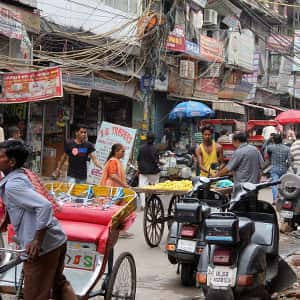
Q. I am concerned that my prescription pill bottle does not have a country of origin listed on the label. I have lived in Asia where I have seen drug factories. I will never take a generic manufactured there. How can I find out where my medicine is made?
A. Ask the pharmacist the name of the manufacturer. Then you will have to do some homework to find out where the pills originate. About the only way we know of is to search online for the manufacturer to see if you can tell where the drug company is located.
But here is a little-known complication. The raw ingredients (the actual chemical in the medicine, as well as the binders, fillers and colors) may all come from different countries. For example, the API (Active Pharmaceutical Ingredient) may come from a manufacturer in China. The coloring agent may come from a factory in India and the fillers (other inactive ingredients) may come from Thailand. The pills may be assembled and packaged in Brazil. What is the country of origin? Is it China where the API was made, or is it Brazil where the final dosage form is created and stamped?
We agree that country of origin should be on the label, even though that can be confusing. Until the law is changed, however, you won’t be able to tell by looking on the label.
It is amazing to us that you can determine at a glance the country where your shirt, pants or shoes are made. Buy fruit in the supermarket and if it comes from another country you will be informed. What’s more, if you buy juice, milk or any canned food you will find the identification code and an expiration date somewhere on the label. If the food is spoiled or contaminated, the USDA and the FDA can track it with the lot number on the label.
Look at your generic pill bottle. Go ahead. Take a minute to retrieve any generic pill bottle you might have. Look it over closely.
It rarely has a manufacturer listed. It rarely has a lot number, so it is impossible to tell when or where it was made or what batch it belonged to. The discard date is almost always one year from the day it was dispended. In other words, there is NO expiration date on the label. The discard date is computer generated and has no relationship with the actual expiration date of your pills.
If you experience a problem with the pills and want to report that concern to the FDA, the agency will ask for the Manufacturer, the Lot number, the NDC number (National Drug Code unique product identifier) and the Expiration date. Here is a link to the “MedWatch Consumer Voluntary Reporting (FORM FDA 3500B) so you can see for yourself. In other words, the FDA requires information from consumers that it is virtually impossible to supply for a generic medication.
We have brought this matter to the attention of the leadership of the FDA and to the leadershp of the National Association of Boards of Pharmacy (that oversees all state boards of pharmacy). Our pleas for action have gone unanswered. It would appear that neither the FDA nor the organization that oversees pharmacy activities care very much about helping patients know the critical details about their medications (manufacturer, lot number, NDC number, expiration date).
If you are as outraged about this as we are, please contact your Senator and Representative. You might also want to let the FDA know this is unacceptable. If the FDA requires patients to supply the name of the drug manufacturer, lot number, NDC number and expiration date in order to file a complaint, then the FDA should require pharmacies to put this information on the label. Otherwise the whole exercise is meaningless, very much like a Catch 22.
While you are at it, why not request that country of origin (where the API comes from and where the pills are assembled) be included on the label as well?
Here are two people at the FDA who hold leadership posts and need to know what real people think about this issue:
Howard.Sklamberg@fda.hhs.gov
Anna.Fine@fda.hhs.gov

